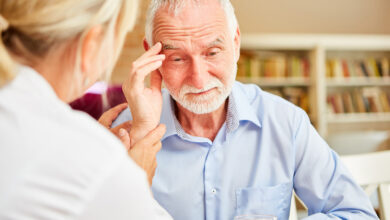RAYNAUD’S DISEASE: A PHENOMENON

“What is Raynaud’s disease?” you ask. Well, it’s both a disease and a phenomenon. It’s Raynaud’s disease when it occurs as an entity unto itself, and it’s Raynaud’s phenomenon when it occurs as a manifestation of another disease or condition. It is also called primary or secondary Raynaud’s. It is estimated that 5% of the general population has Raynaud’s disease or phenomenon. Frequently, it is the first symptom of an autoimmune disorder, like lupus, rheumatoid arthritis, or scleroderma, appearing well in advance of the normally recognized symptoms of the disease, and giving doctors a forecast of problems yet to come.
As you can see by the photo at the beginning of this article, when a patient has Raynaud’s, it is fairly easy to diagnose. When a disease is diagnosed by visual observation, as this is, it is called a clinical diagnosis. In the case of Raynaud’s, the doctor doesn’t need any blood tests or X-rays to diagnose it because he can easily see the problem.
Raynaud’s occurs episodically in response to either exposure to cold temperatures or emotional stress. It can occur from even the slightest cold exposure such as grabbing items in the refrigerator with your hands. The small arterial blood vessels in the fingers and toes go into spasm shutting off the blood supply. The fingers and/or toes become blanched (pale), painful, cyanotic (turn blue), and later ischemic (at severe risk of tissue damage). Vasospasm in the fingers and toes is a normal response to cold exposure. Raynaud’s, however, is an exaggerated vascular response causing far worse symptoms than normal old exposure.
Why this exaggerated response occurs is not known, and the actual cause of the vasospasm is not clearly understood. Probably it is related to the same changes to the immune system that cause an autoimmune disorder. It is reproducible with the same stimulus and worsens as the patient ages and as his/her autoimmune disease progresses.
Treatment of Raynaud’s phenomenon includes avoiding cold exposure, wearing cold-protective clothing, and oral and intravenous drug therapy. Lifestyle modifications are the first step—avoiding cold exposure, wearing gloves and layered clothing, and avoiding tobacco products. When those measures fail, there is a wide range of drugs that can be used to prevent or reverse the vascular spasm so prominent in the phenomenon. Vasodilating drugs like calcium channel blockers (CCB), topical nitroglycerin, and PDE-5 inhibitors (Viagra, Cialis) can be taken regularly, or prior to cold exposure and work fairly well. Nifedipine is the most effective off the CCB’s. Even Botox has been used with success.
In most patients, Raynaud’s is benign and manageable with simple measures. Patients become familiar with how to avoid situations that trigger the symptoms and are able to live comfortably with it. But another subset of patients with autoimmune disorders have severe symptoms that are difficult to control. The severity puts them at risk of losing one or more digits due severe circulatory compromise. That is the extreme, of course, but many patients have very debilitating symptoms that affect lifestyle. These are the patients who benefit from aggressive treatment.
Dr. G’s Opinion: I have had a mild case of Raynaud’s phenomenon for many years. When I wash my hands, if the water is cold, the ends of my fingers from the proximal knuckles on, become pale, while the palms and back of my hands turn purple. Fortunately, I don’t have pain from this, as true Raynaud’s patients do. The color returns to my fingers once I dry them with a towel. Cold air outside will cause the same reaction. I try to wash my hands in warm water and wear gloves or put my hands in a coat pocket when I’m outside. This works well. I know patients who have Raynaud’s phenomenon severe enough to take medication, and they give mixed reviews on the efficacy of the drugs they take for it. It’s one of those problems whose solution is a course of trial and error to find what works best. Living where it’s warm most of the time was an option I chose with little hesitation.
References: Herrick A, Wigley FM. Raynaud’s Phenomenom Best Pract Res Clin Rheumatol 2020 Feb;34(1):101474.
Pauling JD, Hughes M, Pope JE. Raynaud’s phenomenon—an update on diagnosis, classification, and management. Clin Rheumatol 2019 Dec;38(12):3317-3330.
Linnemann B, Erbe M. Raynaud’s phenomenon—Assessment and differential diagnoses. Vasa 2015 May;44(3):166-177.
Devgire V, Hughes M. Raynaud’s Phenomenon Br J Hosp Med 2019 Nov;80(11):658-664.
Belch J, et al. ESVM guidelines—the diagnosis and management of Raynaud’s phenomenon Vasa 2017 Oct; 46(6):413-423.
Habib SM,et al. Botulinum Toxin type A in the treatment of Raynaud’s phenomenon Dermatol Ther 2020 Nov;33(6):e14182.
Linnemann B, Erbe M. Raynaud’s phenomenon and digital ischemia—pharmacological approach and alternative treatment options. Vasa 2016;45(3):291-212.
Hughes M, Herrick AL. Raynaud’s phenomenon Best Pract Res Clin Rheumatol 2016 Feb; 30(1):112-132.




